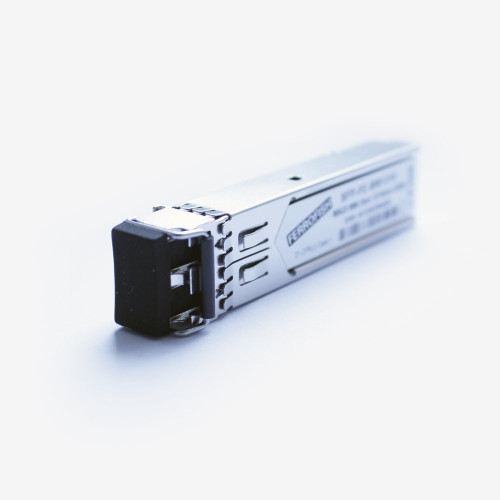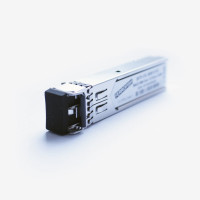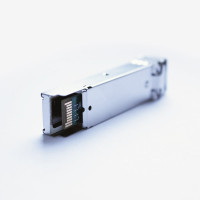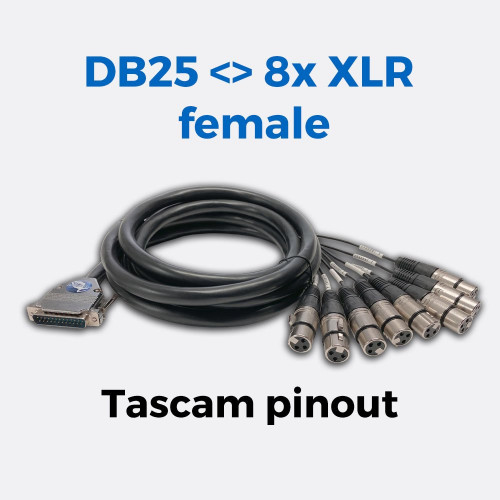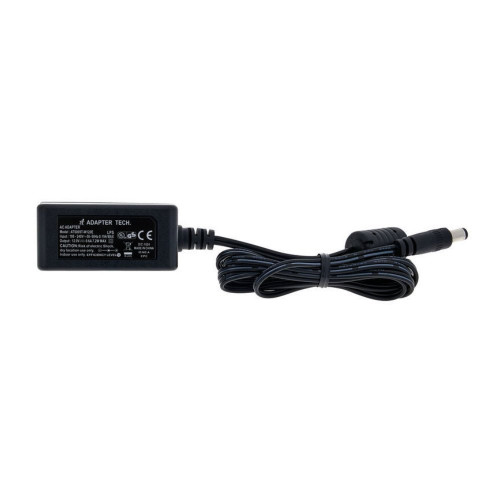Ferrofish MADI Optical SFP Module
Ferrofish MADI SFP Module
Please note: If you are upgrading your Pulse 16 to an MX version, you will also need to purchase an Upgrade Code. The code can be purchased with the SFP Module as a bundle here.
Only an official Ferrofish SFP will allow you to add MADI capability to your Ferrofish Pulse 16 and VertoMX (other manufacturer's SFPs are not compatible).
- Official Ferrofish MADI optical SFP for Ferrofish Pulse and Verto Series
- Adds MADI I/O to the Ferrofish Pulse 16 and Ferrofish VertoMX
- Single- and Multimode options available*
- User-installable
* The standard MADI option is Multimode.
Description
Upgrade your Ferrofish Pulse 16 to a Pulse 16 MX (MADI I/O Upgrade via MADI SFP module)
The Ferrofish Pulse 16 can be upgraded to the new Ferrofish Pulse 16 MX with an optical MADI SFP module. With this module equipped all 16 x 16 channels can be used with sample rates up to 192kHz.
The Pulse 16 MADI Upgrade consists of two parts:
- The Ferrofish MADI SFP Module. Only genuine Ferrofish MADI SFP modules are supported.
- An unlock code. The unlock code is included when purchased directly from Synthax Audio UK via this page.
- Unlock / upgrade codes can also be purchased individually here if required.
This product page is for the MADI SFP Module only. Both the SFP Module and Upgrade Code can be purchased together as a bundle here.
Installation Guide
Ferrofish SFP Guide - How To Install
What is MADI?
MADI is a professional audio interface format which can transfer 64 discrete audio channels over a distance of up to 2 kilometers in multi-mode. Several MADI devices can be connected in series by daisy-chaining, connecting the output of the first device to the input of the second device. The output of the second device is then connected to the input of the third device, and so on.
Up to four Ferrofish Pulse 16 MX units can be daisy-chained, allowing for the transmission of up to 64 analogue inputs and 64 analogue outputs at 48 kHz. When using sample rates higher than 48kHz, the maximum number of transferrable channels is reduced. The following chart shows the amount of digital audio channels for a single MADI port:
| Frequency | MADI Channels |
|---|---|
| 32kHz | 44,1kHz | 48kHz (SMUX/1) | 64 (56) channels |
| 64kHz | 88,2kHz | 96kHz (SMUX/2) | 32 (28) channels |
| 128kHz | 176,4kHz | 192kHz (SMUX/4) | 16 (14) channels |
The original MADI standard utilised a maximum channel count of 56 channels for a single MADI connection (shown in brackets in the above chart), and allow for a sample rate variation of +/- 10%.
Today, most hardware is optomised to support 64 channels via MADI, as rate variations are rarely used anymore. The Ferrofish Pulse 16 MX automatically detects if 56 or 64 channels are received. The amount of channels being sent from the Pulse 16 MX (56 or 64) can be set via the device's onboard setup menu.
Ferrofish SFP Modules - Frequently Asked Questions
The new Ferrofish devices, the AD/DA converter Pulse 16 and the Dante format converter VERTOMX, use so-called SFP modules as a MADI interface. The answers to the most frequently asked questions about the SFP modules and the upgrade possibilities of the Ferrofish devices can be found here.
Q: What is an SFP module?
A: SFP (Small Form-factor Pluggable) is a specification for modular optical or electrical transceivers. These modules come from the network technology and are available in different versions depending on the line type (multimode or single mode) and data rate.
The specification is defined for up to 5 Gbps (gigabit/second). The LC plug is used as standard. Modules for multimode fiber have a black, sometimes beige release lever, modules for singlemode fiber have a blue one.
Q: What is the advantage of the MADI interface with SFP modules?
A: SFP modules are easily and quickly interchangeable, making it easy to switch between different transmission modes. This eliminates the need to convert a device from multimode to singlemode (or vice versa). In addition, you also have free choice of connectors and are not restricted to one type (SC or LC). In short, you are always flexible in adapting to other devices and line types.
Q: What is the difference between SC and LC connectors?
A: The SC connector (subscriber connector) is the quasi standard for optical MADI transmission and is characterized by its plastic housing in a rectangular design (cross-sectional dimensions of approx. 9×9 mm) and its push-pull technology (the connector locks automatically when inserted and unlocks when removed). Another advantage is the possibility to create duplex plugs (two plugs are connected via a duplex clip) and thus to connect or disconnect duplex connections at the same time.
The LC connector is a small form factor connector. In the duplex version, it takes up only the space required by the RJ45 connector, which is widely used in copper transmission technology, and thus takes up considerably less space than the SC connector, which is also widespread. Due to its compact design, it is also used as a connection for modular SFP modules.
Both connectors allow quick and easy assembly and can be used for single mode and multimode transmission.
Q: What is the difference between singlemode and multimode MADI transmission?
A: A multimode glass fiber (quasi MADI standard) consists of a core glass with a diameter of 50 µm or 62.5 µm, a cladding glass with a diameter of 125 µm and a coating. The light-conducting core consists of glass, quartz or plastic fibres and is used to transmit the signal. The sheath causes a total reflection and thus a guiding of the radiation in the glass fibre core. With multimode fibers, distances of up to 2000 m can be bridged.
A single-mode fiber is a glass fiber whose diameter has been reduced to such an extent that it behaves like a waveguide. This type of data transmission does not exploit total reflection, but diffuses the light almost without impact at the interface. The single-mode fiber, which is sometimes also known as single-mode fiber, usually has a core diameter of typically 3 to 9 µm, but the outer (sheath) diameter is also 125 µm. Due to their construction, single-mode fibers are more expensive to produce than multimode fibers, but they ensure better long-distance transmission. With singlemode fibers, distances of up to 10 km can be bridged without repeaters.
Singlemode cables are usually yellow in colour, while multimode cables are usually orange.
Q: Which SFP modules can I use?
A: Ferrofish offers its own SFP modules that are fully compatible with the devices. It is recommended that only SFP modules from Ferrofish be used, as third-party modules cannot be guaranteed to function properly.
Q: Which SFP modules are offered by Ferrofish?
A: Ferrofish offers two different SFP modules. Depending on the type of line you choose a multimode or singlemode module.
Q: How do I upgrade my Pulse16 to MADI?
A: On the one hand, you need an SFP module from Ferrofish with the type of cable you want (single or multimode). You also need a special firmware update for your Pulse16 to enable the MADI functionality. You can obtain both from an authorized Ferrofish dealer or Synthax Audio UK. The selected SFP module is then plugged into the slot provided on the Ferrofish device and the firmware update is installed.
This turns your Pulse 16 into a Pulse 16 MX.
Q: How do I convert my VERTO MX to single mode?
A: Your VERTO MX ships with a multimode SFP module as standard. To switch to single mode MADI, you'll need an SFP single mode module from Ferrofish, which can be purchased here.
Q: Where can I find the firmware for the Pulse 16 MADI upgrade?
A: The latest firmware is available for download from the Ferrofish website.
Customer Reviews
This item currently has no reviews.






















